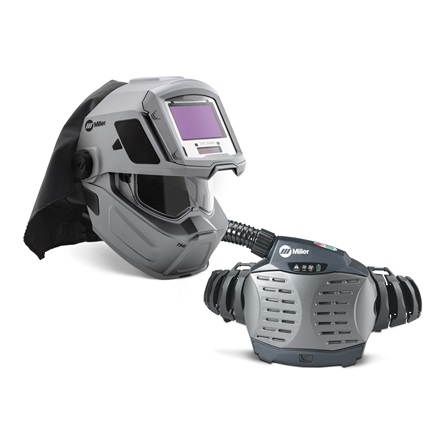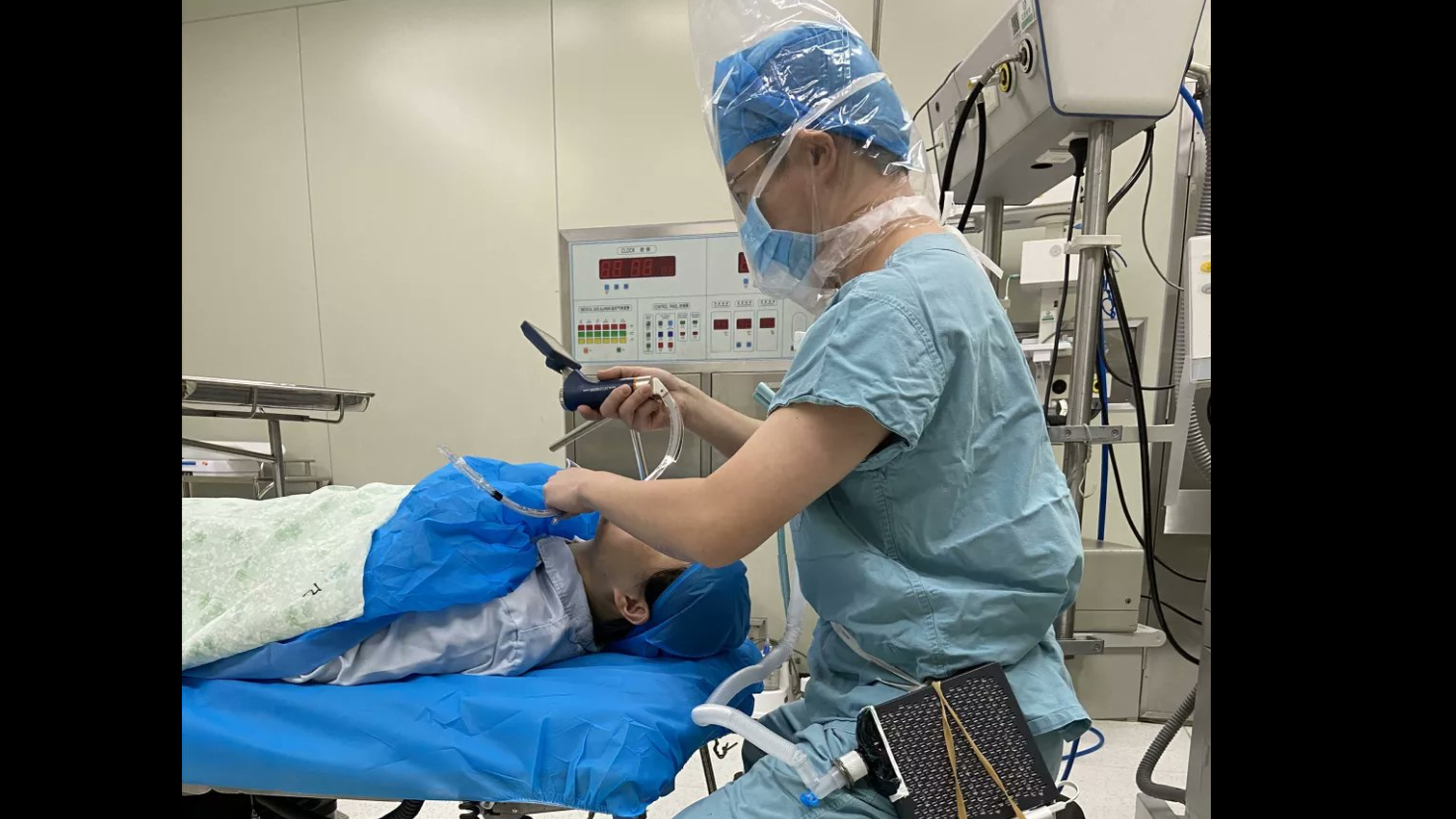
![]() More than logistics, the manufacturing capacity was not enough. This was pointed out by one of the last remaining face mask manufacturers in the USA
More than logistics, the manufacturing capacity was not enough. This was pointed out by one of the last remaining face mask manufacturers in the USA
 Yeah I'm a very late adopter and this is one of several cases where that policy bit me in the butt
Yeah I'm a very late adopter and this is one of several cases where that policy bit me in the butt
![]() Face shields help, especially if someone coughs directly to someone's face, but without an airtight seal, viral particles could theoretically get through
Face shields help, especially if someone coughs directly to someone's face, but without an airtight seal, viral particles could theoretically get through
 @Hiram what's that you say? Globalized manufacturing supply chains can't physically meet demand fast enough for emergencies? This is my shocked face
@Hiram what's that you say? Globalized manufacturing supply chains can't physically meet demand fast enough for emergencies? This is my shocked face
![]() Even a full face mask on someone with a beard will decrease the efficiency significantly. From all the testing it really makes you wonder what kind of protection, if any, most homemade N95 masks are providing. Probably very little
Even a full face mask on someone with a beard will decrease the efficiency significantly. From all the testing it really makes you wonder what kind of protection, if any, most homemade N95 masks are providing. Probably very little
 Hiram, where does your mask exhaust? Through the N95 filters or through a separate port direct to the air?
Hiram, where does your mask exhaust? Through the N95 filters or through a separate port direct to the air?
![]() The full face snorkel masks have an exhaust port on the front, in front of the mouth. They're unfiltered.
The full face snorkel masks have an exhaust port on the front, in front of the mouth. They're unfiltered.
![]() The air resistance of the filters and lack of water pressure on the mouth exhaust mushroom valve will result in most of the air exiting through the mouth and a smaller fraction through the filters. If the mouth valve was sealed, then it would all go through the filters on top of the head where the snorkel attaches
The air resistance of the filters and lack of water pressure on the mouth exhaust mushroom valve will result in most of the air exiting through the mouth and a smaller fraction through the filters. If the mouth valve was sealed, then it would all go through the filters on top of the head where the snorkel attaches
![]() Physicians in Miami we work with have been putting surgical masks over the mouth area. It looks like a robot with a face mask on.
Physicians in Miami we work with have been putting surgical masks over the mouth area. It looks like a robot with a face mask on.

![]() It's REALLY funny looking.
It's REALLY funny looking.
 OK, I see it now. Yeah, I'd think moist breath going back through the filters would be a big problem
OK, I see it now. Yeah, I'd think moist breath going back through the filters would be a big problem
![]() I think the COVID crisis has highlighted we need more local manufacturing of PPE so we are not vulnerable to global demand, supply chain, logistics, ...
I think the COVID crisis has highlighted we need more local manufacturing of PPE so we are not vulnerable to global demand, supply chain, logistics, ...
![]() The mask looks like Shrek
The mask looks like Shrek
![]() The photo of the face masks over the snorkel is here: https://www.protect-mi.org/reusable-face-shield
The photo of the face masks over the snorkel is here: https://www.protect-mi.org/reusable-face-shield
 Yeah, and not just PPE. Lots of lessons to learn from all this
Yeah, and not just PPE. Lots of lessons to learn from all this

![]() It's not as funny head-on as with the side view. :D
It's not as funny head-on as with the side view. :D
![]() I think one good thing about 3M filters is that there are many filter options that could do the job. Some have extra filtering features that are unnecessary. The ones we tested were mostly purely particulate filters
I think one good thing about 3M filters is that there are many filter options that could do the job. Some have extra filtering features that are unnecessary. The ones we tested were mostly purely particulate filters

![]() Anesthesia developed masks mainly focused on using commercial ventilator filters, some of which worked better than others
Anesthesia developed masks mainly focused on using commercial ventilator filters, some of which worked better than others
![]() The 3D printed face shields have been amazing, but also pretty scary.
The 3D printed face shields have been amazing, but also pretty scary.
 Did you ever toy with the idea of PPAR - powered air-purifying respirators?
Did you ever toy with the idea of PPAR - powered air-purifying respirators?

https://www.millerwelds.com/safety/respiratory/powered-air-purifying-respirators-m00482
Powered Air Purifying Respirators (PAPR)
ClearLight™ Lens Technology Optimizes contrast and clarity in welding and light states, while providing a brighter light state to increase helmet-on time for non-welding tasks, enhancing visibility and reducing eye strain. Learn More

 Little over the top, but you get the idea
Little over the top, but you get the idea
![]() There's no quality control, and I have heard stories of them falling apart during use, which means someone ends up unprotected when they're already in a dangerous situation.
There's no quality control, and I have heard stories of them falling apart during use, which means someone ends up unprotected when they're already in a dangerous situation.
![]() PAPR's are great, but they have a 115 to 170 liter per minute airflow, and typically weight 4.5 or so kg. They're upward of $1700 normally.
PAPR's are great, but they have a 115 to 170 liter per minute airflow, and typically weight 4.5 or so kg. They're upward of $1700 normally.
![]() Ford + 3M have been making a $750 PAPR for this emergency (12,500 units/week, already NIOSH approved): https://www.cnet.com/roadshow/news/ford-respirator-healthcare-workers-coronavirus/
Ford + 3M have been making a $750 PAPR for this emergency (12,500 units/week, already NIOSH approved): https://www.cnet.com/roadshow/news/ford-respirator-healthcare-workers-coronavirus/

 @Hiram Is O2sat actually a reliable signal to detect CO2 rebreathing? If there was mixing of exhalate with inhalate, couldn't hypercapnia be a problem even despite decent O2sat?
@Hiram Is O2sat actually a reliable signal to detect CO2 rebreathing? If there was mixing of exhalate with inhalate, couldn't hypercapnia be a problem even despite decent O2sat?
![]() One local physician was developing a PAPR with some private money and drove to do the FDA testing. I think this was an idea they were hoping to commercialize. The first round of testing failed because the ventilator bacterial filter they used did not work. Not sure about the current status of the project. In theory it is probably easier to pass the test with a PAPR as air leaks become less of an issue
One local physician was developing a PAPR with some private money and drove to do the FDA testing. I think this was an idea they were hoping to commercialize. The first round of testing failed because the ventilator bacterial filter they used did not work. Not sure about the current status of the project. In theory it is probably easier to pass the test with a PAPR as air leaks become less of an issue

https://hackaday.com/2020/02/12/hacked-protective-gear-keeps-doctor-safe-in-the-hot-zone/
Hacked Protective Gear Keeps Doctor Safe In The Hot Zone
It's rarely a wise idea to put a plastic bag over one's head, but when the choice is between that and possibly being exposed to a dangerous virus, you do what you have to. So you might as well do it right and build a field-expedient positive pressure hood.
![]() I don't think O2 sat is a good indicator of rebreathing. We measured CO2 directly in the eye chamber of the snorkel masks, and found nearly 0.5% CO2 when not using the Ocean Reef adaptor with the mushroom valve.
I don't think O2 sat is a good indicator of rebreathing. We measured CO2 directly in the eye chamber of the snorkel masks, and found nearly 0.5% CO2 when not using the Ocean Reef adaptor with the mushroom valve.
![]() I would have to brush on my physiology. But @alexwhittemore you may be right. Arterial blood gases would be the way to test this on a subject or the Stanford group had a way to test this in their website
I would have to brush on my physiology. But @alexwhittemore you may be right. Arterial blood gases would be the way to test this on a subject or the Stanford group had a way to test this in their website
![]() Our group has been developing a solution midway between a PAPR and a face shield.
Our group has been developing a solution midway between a PAPR and a face shield.
![]() We're pursuing a new device class with FDA.
We're pursuing a new device class with FDA.
 @Lex Kravitz HEPA vacuum cleaner filters. We were exactly here. Good to know. Thank you.
@Lex Kravitz HEPA vacuum cleaner filters. We were exactly here. Good to know. Thank you.
![]() vacuum cleaner filters are a pretty bad solution for respiratory protection.
vacuum cleaner filters are a pretty bad solution for respiratory protection.
![]() HEPA filters apparently can release carbon particles that can make the fit testing fail
HEPA filters apparently can release carbon particles that can make the fit testing fail
 But they look good on paper...
But they look good on paper...
![]() They need to handle very high loads of dirt and debris before failing, and back pressure is no issue.
They need to handle very high loads of dirt and debris before failing, and back pressure is no issue.

 You have a new follower. Thank you.
You have a new follower. Thank you.
![]() They're really difficult to breathe through. NIOSH has limits on the pressure drop across filters for unpowered and powered respirators to avoid issues. Basically lungs can get hurt by pulling too hard.
They're really difficult to breathe through. NIOSH has limits on the pressure drop across filters for unpowered and powered respirators to avoid issues. Basically lungs can get hurt by pulling too hard.
 We also looked at the HEPA air filtration solution it looks that you ended up with, but never generated the adapter.
We also looked at the HEPA air filtration solution it looks that you ended up with, but never generated the adapter.
 So here we are at the top of the hour, and I'm sure Lex and Hiram both need to get back to work. I just want to say thanks to both of them for their time today, and that we really appreciate their efforts to respond to the pandemic in a productive way. Doctors, thank you both very much!
So here we are at the top of the hour, and I'm sure Lex and Hiram both need to get back to work. I just want to say thanks to both of them for their time today, and that we really appreciate their efforts to respond to the pandemic in a productive way. Doctors, thank you both very much!
![]() ANother thing we learned is that some 3D prints may not be airtight and an airtight coating may be necessary. We also don't know how the VOCs from the different prints could affect someone's health
ANother thing we learned is that some 3D prints may not be airtight and an airtight coating may be necessary. We also don't know how the VOCs from the different prints could affect someone's health

 5 solid walls, overextrude.
5 solid walls, overextrude.
 not pretty, but airtight.
not pretty, but airtight.
![]() Thanks to everyone! Good luck with your projects
Thanks to everyone! Good luck with your projects


 Thanks Lex! Thanks Hiram!
Thanks Lex! Thanks Hiram!
![]() Lex and Kyle have been amazing collaborators!
Lex and Kyle have been amazing collaborators!
![]() That's a good call. I think that the pneumask team insisted that only resin based prints would be acceptable, but I think that didn't make sense.
That's a good call. I think that the pneumask team insisted that only resin based prints would be acceptable, but I think that didn't make sense.
 We were inherently lazy. :) Thank you @Lex Kravitz @Hiram . We can follow up offline if you want to share notes.
We were inherently lazy. :) Thank you @Lex Kravitz @Hiram . We can follow up offline if you want to share notes.
 We're changing gears next week, with Walter from Gigatron:
We're changing gears next week, with Walter from Gigatron:

https://hackaday.io/event/171602-gigatron-hack-chat
Gigatron Hack Chat
Walter Belgers will host the Hack Chat on Wednesday, June 24, 2020 at noon Pacific Time. Time zones got you down? Here's a handy time converter! In some ways, it's good that those days are gone.
![]() Thank you @Lex Kravitz & @Hiram!
Thank you @Lex Kravitz & @Hiram!
 @william I think a simple solution would be a food grade silicon coating
@william I think a simple solution would be a food grade silicon coating
 I'll be posting a transcript shortly. Thanks all!
I'll be posting a transcript shortly. Thanks all!
 Dan Maloney
Dan Maloney


Discussions
Become a Hackaday.io Member
Create an account to leave a comment. Already have an account? Log In.